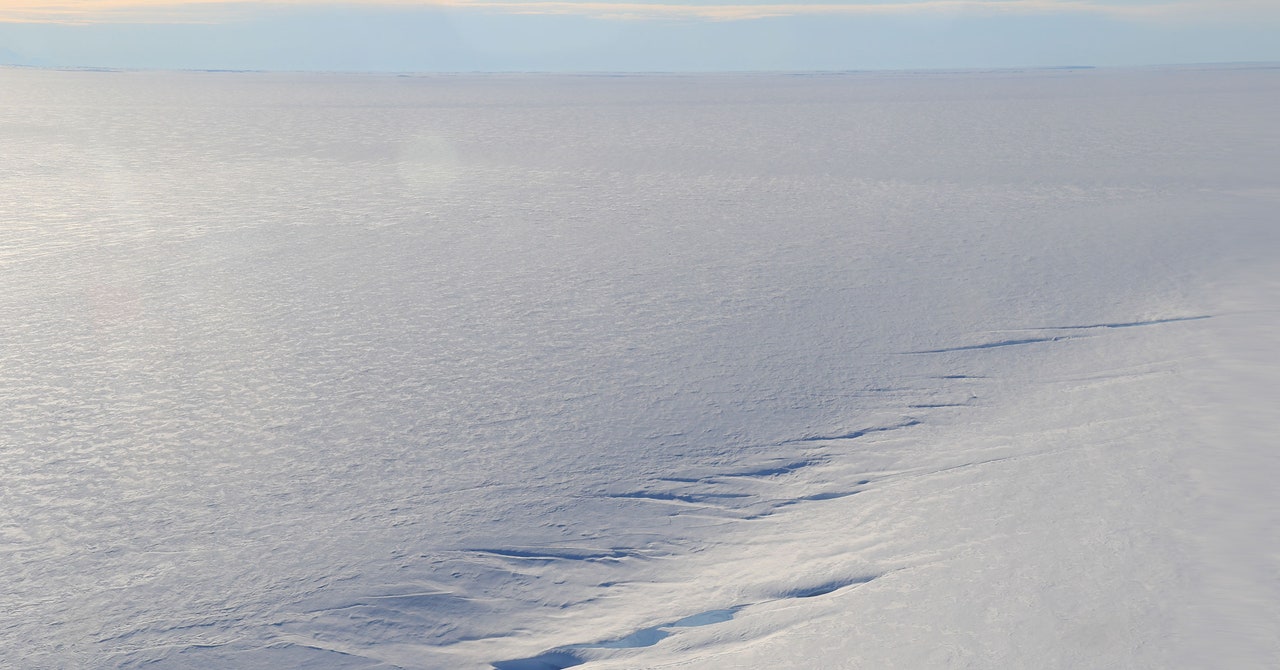
But the news from Icefin doesn’t bode well. Waters warm enough to melt glaciers are swirling around Thwaites’ grounding line—the exact point where ice meets land—and this line has retreated over a mile since 2011. That means there’s now more seawater in contact with the bottom of the glacier, which means more melting. The ice, says Washam, “is the most chaotic part of all of this—it has these really cool sort of corrugated, undulating features close to the grounding line.” These features are hot spots of melting.
If the underside of Thwaites were flat, the freshwater that melts out of the ice would pool beneath it like a lid, insulating it from being further melted by warmer seawater. “It will basically fight the movement of ocean heat into the ice,” says Washam. Instead, the undulating, sloped features disrupt the lid of freshwater, allowing warmer waters to contact the ice.
This revelation gives glaciologists critical insight into how glaciers everywhere might be degrading—and is a factor they haven’t yet accounted for in modeling. “This sort of other way of melting along these sloped ice surfaces is just not in ice sheet models,” Washam says. “What this shows us is this is something that has to be considered if we’re going to more accurately project Antarctica’s contribution to sea level rise.”
Lizzy Clyne, a geophysicist and glaciologist at Lewis and Clark College, and another conference presenter, has found yet more trouble at the grounding zone—by using explosives, which crews lower into a 20-foot-deep hole in the ice. (“It’s kind of like a firework,” Clyne says. “It would hurt you if it blew up in your hand, but it’s not like a giant bomb.”) An array of seismometers at the surface measures how the energy of the explosion bounces off what’s below the ice. Using that data, Clyne can see whether it’s water or solid earth. It works like Pettit’s ground-penetrating radar, and indeed Clyne marries the seismic data with radar data too.
Icefin’s view of the underside of Thwaites Glacier
Video: Peter Washam
The data, which Clyne has been gathering since 2018, is showing that because the ice shelf portion of Thwaites is floating on the sea, it tilts when the tide goes in and out. As it lifts up, warmer water slips through the grounding zone and underneath the ice sheet that’s resting on the land, driving still more melting. It’s yet another critical dynamic that isn’t represented in the modeling of glacial melt. “It’s got this kind of action where you might be pulling that couple-degrees-above-freezing seawater a little bit farther inland than we initially thought,” says Clyne. “It might be like a few centimeters of water, a little thin layer going farther inland. But that’s all it takes to melt ice.”
Now that scientists are piecing these trends together—the fractures in the ice shelf, the complexity of the underside of the glacier, and the tidal pumping—they’ve landed at a grim assessment of the Doomsday Glacier: It’s decomposing in more ways than they previously understood. If it melts entirely and takes surrounding glaciers with it, sea levels would go up a total of 10 feet. “In my view,” says Clyne, “if we’re going to have a very rapid amount of sea level rise over the next several decades, it can’t happen unless Thwaites is contributing a lot to it.”
By dragging radar on sleds, piloting torpedo robots, and setting off explosives, scientists are building an ever-clearer picture of the most important glacier on Earth. “I individually don’t have the ability to control sea level rise, and I can’t fix global warming on my own,” says Clyne. “But what we can do is study and understand what’s happening, what’s going to happen, and how to mitigate as much as possible.”
More Great WIRED Stories


